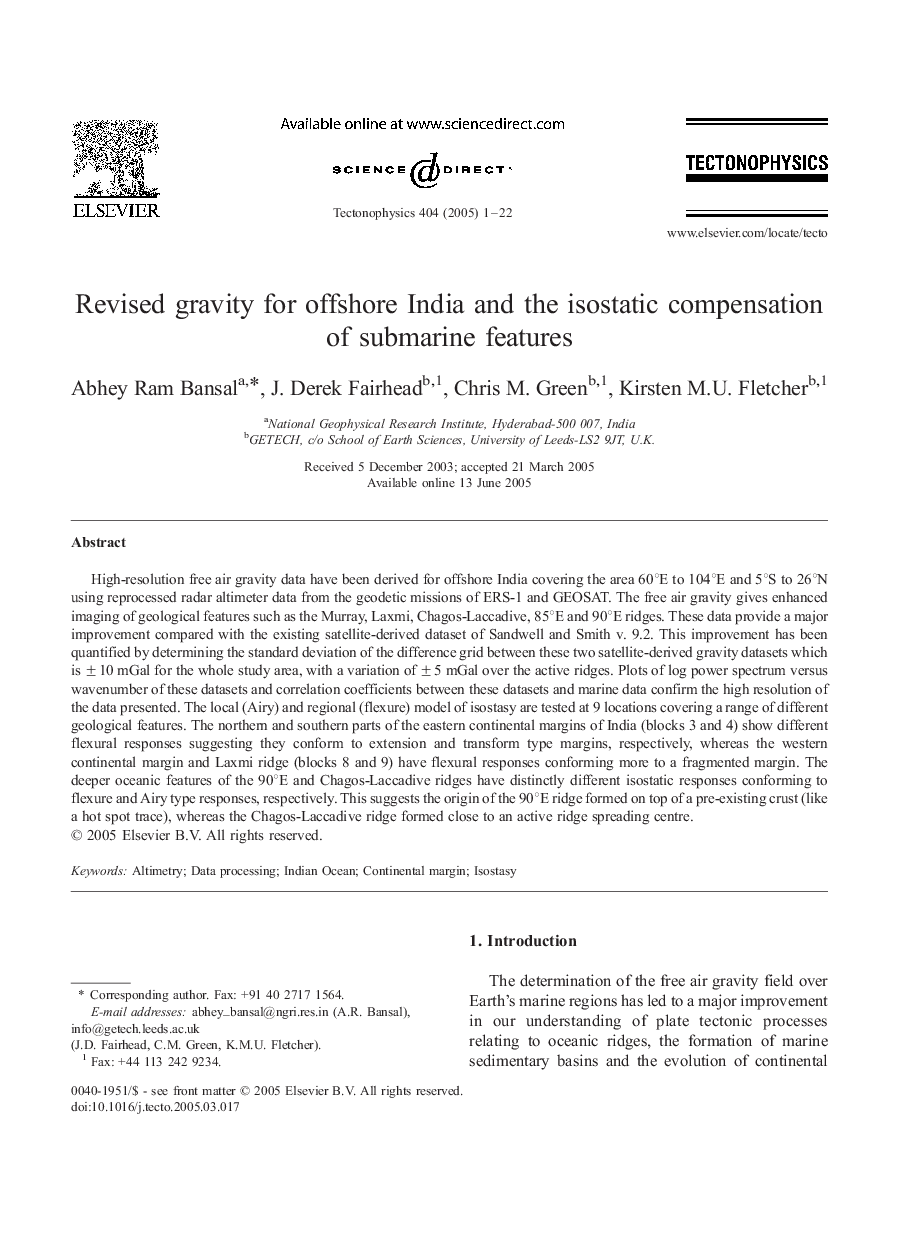| کد مقاله | کد نشریه | سال انتشار | مقاله انگلیسی | نسخه تمام متن |
|---|---|---|---|---|
| 9527165 | 1636977 | 2005 | 22 صفحه PDF | دانلود رایگان |
عنوان انگلیسی مقاله ISI
Revised gravity for offshore India and the isostatic compensation of submarine features
دانلود مقاله + سفارش ترجمه
دانلود مقاله ISI انگلیسی
رایگان برای ایرانیان
کلمات کلیدی
موضوعات مرتبط
مهندسی و علوم پایه
علوم زمین و سیارات
فرآیندهای سطح زمین
پیش نمایش صفحه اول مقاله

چکیده انگلیسی
High-resolution free air gravity data have been derived for offshore India covering the area 60°E to 104°E and 5°S to 26°N using reprocessed radar altimeter data from the geodetic missions of ERS-1 and GEOSAT. The free air gravity gives enhanced imaging of geological features such as the Murray, Laxmi, Chagos-Laccadive, 85°E and 90°E ridges. These data provide a major improvement compared with the existing satellite-derived dataset of Sandwell and Smith v. 9.2. This improvement has been quantified by determining the standard deviation of the difference grid between these two satellite-derived gravity datasets which is ± 10 mGal for the whole study area, with a variation of ± 5 mGal over the active ridges. Plots of log power spectrum versus wavenumber of these datasets and correlation coefficients between these datasets and marine data confirm the high resolution of the data presented. The local (Airy) and regional (flexure) model of isostasy are tested at 9 locations covering a range of different geological features. The northern and southern parts of the eastern continental margins of India (blocks 3 and 4) show different flexural responses suggesting they conform to extension and transform type margins, respectively, whereas the western continental margin and Laxmi ridge (blocks 8 and 9) have flexural responses conforming more to a fragmented margin. The deeper oceanic features of the 90°E and Chagos-Laccadive ridges have distinctly different isostatic responses conforming to flexure and Airy type responses, respectively. This suggests the origin of the 90°E ridge formed on top of a pre-existing crust (like a hot spot trace), whereas the Chagos-Laccadive ridge formed close to an active ridge spreading centre.
ناشر
Database: Elsevier - ScienceDirect (ساینس دایرکت)
Journal: Tectonophysics - Volume 404, Issues 1â2, 19 July 2005, Pages 1-22
Journal: Tectonophysics - Volume 404, Issues 1â2, 19 July 2005, Pages 1-22
نویسندگان
Abhey Ram Bansal, J. Derek Fairhead, Chris M. Green, Kirsten M.U. Fletcher,